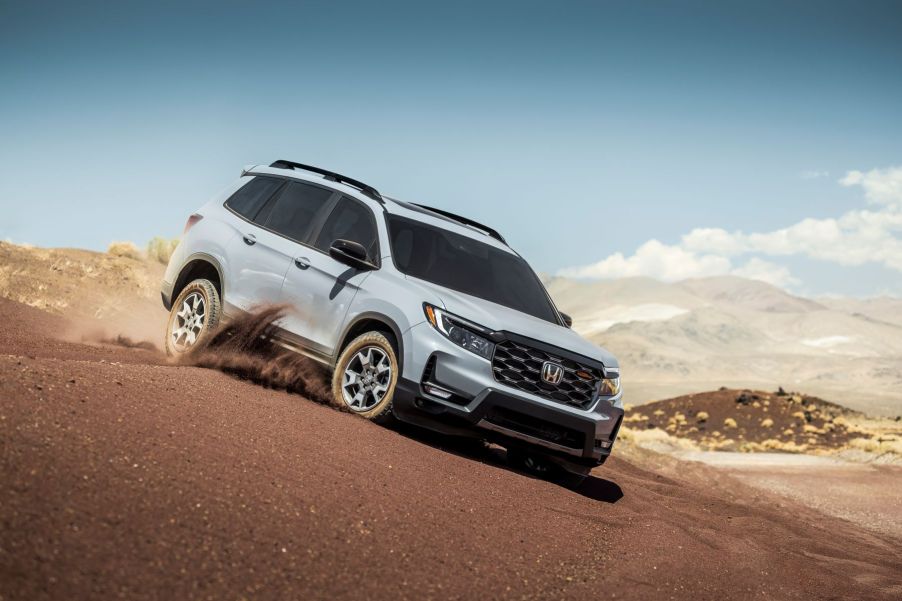
The 6 Midsize SUVs With the Worst IIHS Side Test Safety Ratings
Drivers everywhere rely on the IIHS to provide unbiased reports on the safety of popular vehicles. In its latest round of tests, the IIHS saw how well the automotive market’s midsize SUV segment could withstand side impacts.
Safety is particularly important for SUVs, which are typically used to carry entire families. Many SUVs passed the IIHS’s tests with flying colors, but these six midsize SUVs clearly need to do their homework.
2022 Honda Passport

According to the IIHS, the Passport provides adequate protection for the driver’s head and torso area. However, drivers have minimal protection for their pelvic region, and the SUV’s safety cage isn’t up to IIHS’s standards. Honda Passport rear passengers have excellent protection in every region except the torso.
The Honda Passport is a relatively new SUV, so it still has plenty of time to redeem itself. It currently already receives good reviews for its roomy interior dimensions and peppy performance. It has eight advanced safety features, all of which are included in the base EX-L trim.
2022 Honda Pilot
The Honda Pilot’s side IIHS crash test scores were identical to the Honda Passport’s. While the Pilot is generally a well-liked SUV, it does have a spotty history regarding reliability. One model year will be almost perfect, only to have the next one plagued with issues.
The 2022 model year is decently reliable, plus it comes with a lot of standard safety equipment. Kelly Blue Book says that this SUV also offers steady handling without much body lean. A rugged TrailSport trim also debuted for this model year, though we wouldn’t risk taking it on any extreme off-roading trails.
2022 Hyundai Palisade
For driver’s-side impacts, the Hyundai Palisade received the worst possible score for pelvic protection. The vehicle’s safety structure earned a passable score. Backseat riders are in better shape during a crash, but there isn’t enough torso protection for IIHS’s liking.
For its third model year, the 2022 Palisade received even more advanced safety features. Crash-prevention and lane-keeping functions are a given, but the Palisade also monitors driver attention and dangers outside the vehicle. If another car is approaching the passenger side, the doors will automatically lock to keep riders inside until it passes.
2021-2022 Jeep Wrangler (4-Door)
The Jeep Wrangler actually received a lot of high marks but failed miserably in terms of head protection for rear passengers. This alone caused the IIHS to give these two Jeeps a lower final grade.
The back seats are upright and rigid, so they can only really provide enough comfort during short trips. This, combined with the Wrangler’s shaky ride quality on civilized pavement, can make sitting in the backseat incredibly nerve-wracking. You also won’t find any advanced driver’s aids in the base model.
2022 Kia Telluride
Despite the Kia Telluride’s overwhelmingly positive reputation, it doesn’t have the best safety cage and can’t provide adequate pelvis protection for drivers, according to the IIHS. You can probably avoid injury sitting in the back row, though it needs some extra torso coverage.
Still, it’s worth noting that the Kia Telluride has a lengthy selection of safety features and a good track record for reliability. Most adults also won’t have to worry about bumping their heads or getting cramped legs while sitting in the third row.
2022 Nissan Murano
The Nissan Murano’s back row is the safest place to be, but the cabin is another story. While your head and neck will probably be protected in a crash, your pelvis and torso might have too much exposure, according to the IIHS. The Nissan Murano still has a lot of safety features, but those can only do so much once the impact has been made.


